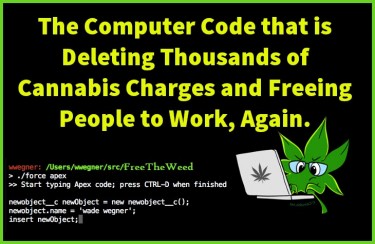
Programmers Love Cannabis – Over 35% of programmers use weed when programming
It seems that cannabis could be a booster for software programmers, as 35% of volunteers found in a survey that they used cannabis to spark their creative tendencies in programming.
The United States of America is on the verge of full-blown decriminalization of cannabis. This means that drug policies regarding cannabis use in the workplace may soon be reviewed. The software programming area is mostly made up of people who work remotely while doing their engineering jobs. However, this does not mean that they do not have a drug policy to adhere to.
Madeline Endres, Kevin Boehnke and West Le Weiner recently co-authored a paper examining the patterns of cannabis use, perception and motivation of software programmers in the country. The trio set out to figure out whether or not software developers rely on cannabis to get into the right zone for debugging or creating unique code.
Hashing It Out: A Poll on Cannabis Use, Perceptions, and Motivation of Programmers
This study, published on Cornell University’s arXiv in the first week of December 2021, surveyed a total of 803 developers, including full-time and part-time developers. The researchers are based at the University of Michigan, and this survey was conducted to pinpoint the prevalence of cannabis use among programmers, as well as their motivations for use and post-use perception.
According to many studies, cannabis is a productivity booster. Therefore, if used correctly, it could help programmers brainstorm, code, debug, or even prototype. Cannabis is used in many areas to increase productivity. However, not all workers in all sectors can use cannabis. In this study, volunteers indicated that the drug is used primarily for its perceived improvement qualities and for recreational purposes.
The results of the survey showed that around a third of the population had previously consumed a cannabis product while coding or performing other related tasks. 18% said they used cannabis at work at least once a month. More than 70% admitted using some form of cannabis product while at work in 2021. In the Motivation for Using Options, less than 40% said they used the drug for reasons related to improving their programming skills. On the other hand, a small percentage (around 15%) cited general health problems such as chronic pain or mental disorders as their motivation for use.
The study also found that programmers used cannabis for recreation and skill enhancement rather than for its health benefits. 60% said cannabis made their job more enjoyable and enjoyable. This is not difficult to understand as programming can get pretty intense and boring in a short amount of time. 53% of the surveyed population said that cannabis helps develop their programming zone and helps them find simple, creative and efficient solutions to overcome challenges that may arise while at work.
Another notable finding from the report is that over 90% of participants fully support cannabis reforms, regardless of whether or not they have used the drug. Many of them said that medicinal and recreational cannabis should be decriminalized and legalized across the country. This corresponds to the opinion of the majority of the US population.
Guidelines for Drug Testing in the US Technology Sector
The software engineering niche in the United States has an ongoing cannabis-ban policy that prohibits workers from consuming the drug. This has resulted in a shortage of manpower to fill certain positions in the industry. This staff shortage is one of the main reasons the three authors conducted this survey. Drug testing guidelines in the software engineering industry have also limited the number of workers willing to work in some programming positions within the US government.
Almost every field is affected by these drug testing guidelines. That staff shortage will only get worse with the new range of remote jobs flying around. Madeline, Kevin, and Westley found that the same staff shortage was observed at the federal level. The report included a statement from former FBI director James Comey of his intention to relax some of the bureau’s drug use guidelines. It did so over six years ago, in 2014. Comey, who made the statement in an interview with the Washington Post, said that many of the best software programs and hackers in the country have an affinity for cannabis.
In order to have a team with the best gurus and specialists in the programming and hacking sector, he was ready to hire cannabis users. The most important thing is to catch cyber criminals and keep confidential government files safe.
In June, Amazon announced a review of its US field drug testing guidelines for cannabis in the country.
The tech company then announced in September that its decision to stop drug testing could only be perfected by restoring the eligibility status of workers fired or fined for positive drug test results. This is how the company wipes out the records of its former employees and applicants after complaints that the new guidelines are retroactive.
Bottom line
The results of the study could have implications for current politics in the US technology industry. It could also encourage in-depth research into cannabis use while programming or working on similar activities. Now that marijuana is accepted by the general US population, a heated debate is looming on the horizon about the future of drug testing policy in all positions within the US workforce.
Will other constitutional states take the New York Department of Labor’s oath stating that employers have no right to test workers for cannabis for drugs? Or would all penalties for positive cannabis use be abolished? It’s important to note that some jobs require marijuana drug testing forever because of their sensitivity.
CODING AND CANNABIS, READ MORE …

THE COMPUTER CODE THAT DELETES MARIJUNA IMPOSITION RECORDS!
OR..

WHY THE AFFINITY ALGORITHM HELPS KEEP WEED ILLEGAL!

Post a comment: